For millions of people around the globe, water, sanitation and hygiene conditions have improved. Still, in 2015, 663 million people are using unsafe drinking water. VII Photo’s Ashley Gilbertson photographed in seven countries for UNICEF, making portraits of families and their daily water use.
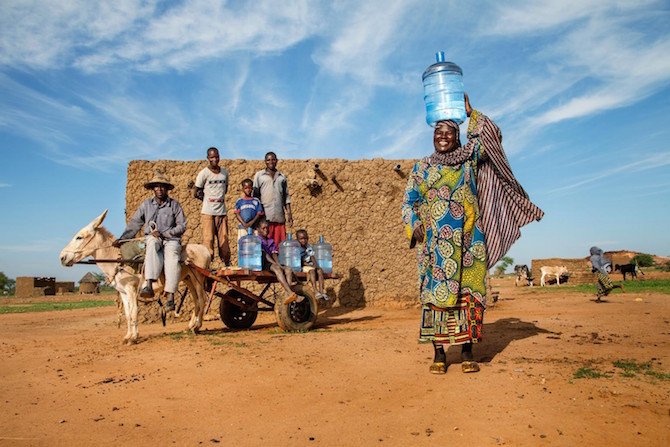
(Foreground) Fouré Moussa collects the 80 litres of water her family uses daily from a borehole two kilometres from her home, in the Niger. To avoid long queues at the water source, she goes at night. The walk takes 30 minutes each way, and once there, it takes 15 minutes to fill a container.
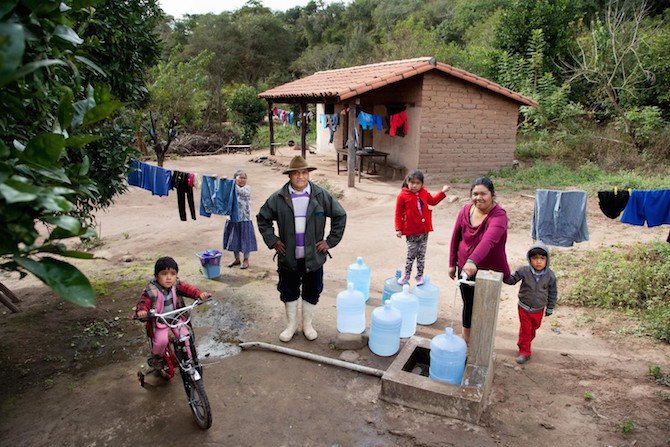
(Third from left) René Visalla and his family, indigenous Guaraní in Bolivia, use 140 litres of water a day. He says that running water and a toilet have brought his family safety, including from snakes in the bushes, where they once relieved themselves.

Rhoda January’s family draws the 100 litres of water they use from a recently installed borehole, in Malawi. Previously, their water came from shallow wells.
“The water was really bad. … We were supposed to add chemicals to clean it, but we are so poor we couldn’t afford it,” she said.
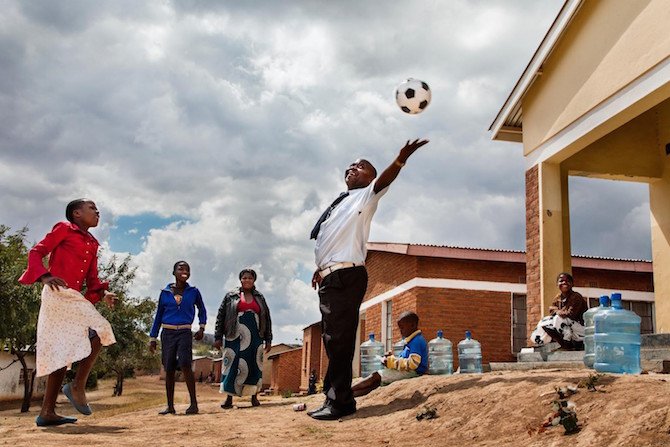
(Foreground) Felix Siliya’s family collects their 120 litres of water from a borehole 700 metres from their home, in Malawi. Previously, the nearest borehole was five kilometres away.
“[W]hen water was so far away, we couldn’t carry a lot, so we never had enough water,” he said.
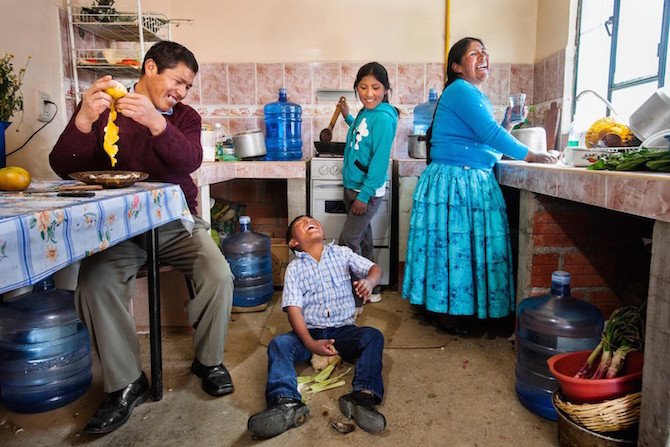
The Esteban family lives in District 7, one of the poorest neighbourhoods in the Bolivian city of El Alto, where they use 100 litres of water daily.
“The most important thing in my life and my home is water. Without it we don’t have life,” said Ms. Esteban.
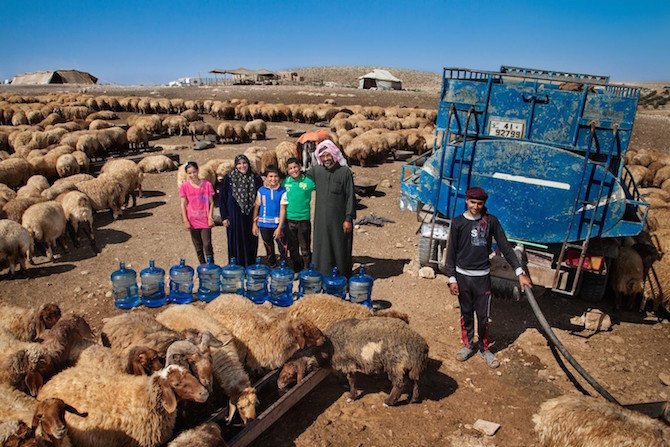
(Second from right) Abu Ibrahim’s family, members of the Bedouin ethnic group, move from place to place in Jordan’s deserts, following access to water and food for their 700 sheep. They use 8,000 litres of water daily—200 for themselves and 7,800 for their herd.
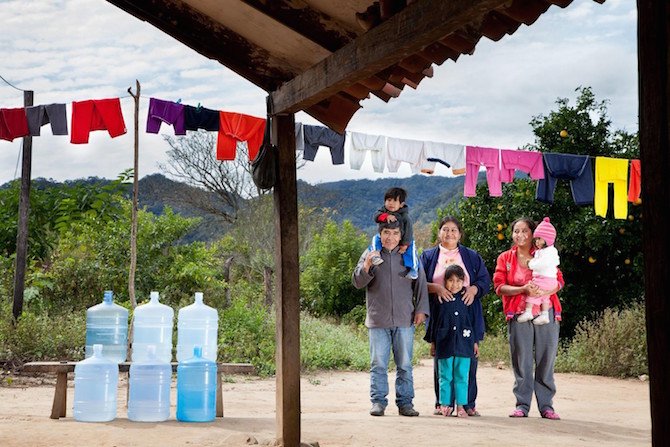
The Flores family, indigenous Guaraní in Bolivia, uses 120 litres of water each day: 20 litres to cook, 35 to flush their toilet, 15 to shower, 10 to wash clothes, 35 to wash pots, pans and dishes, and only 5 to drink.
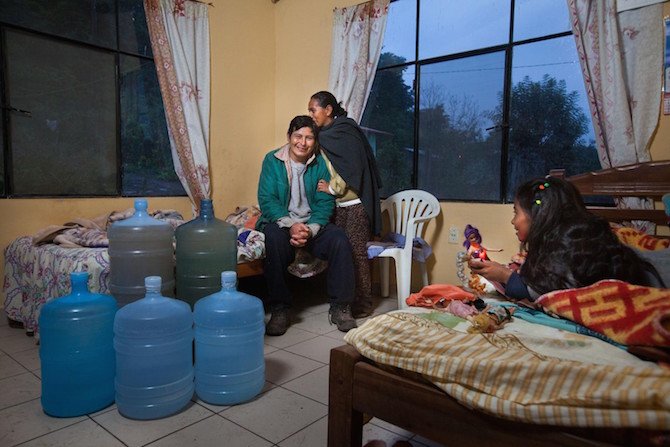
The Miranda family raises chickens, keeps bees for honey and grows oranges, but water for families in their community—Puca Huasi, in Bolivia—is provided only for household use. For the Mirandas, that’s 100 litres, but they must source their own additional water for farming.
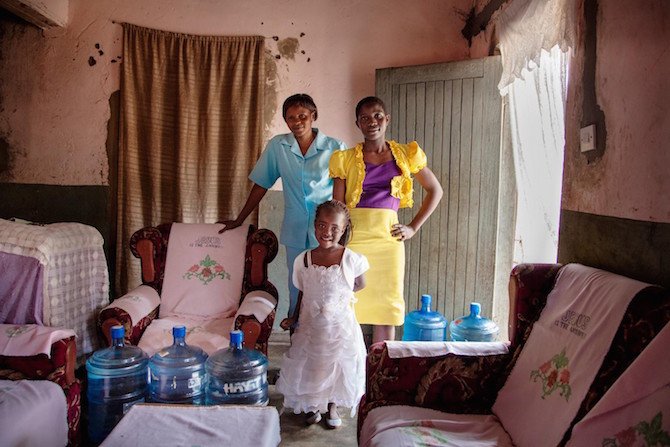
Mercy Katondo, a community health worker and single mother in Malawi, and her daughters use 100 litres of water, drawn from a neighbour’s tap.
“It’s a very difficult life because I have to find everything for myself and my kids. The fact that water is nearby greatly reduces my burden,” she said.
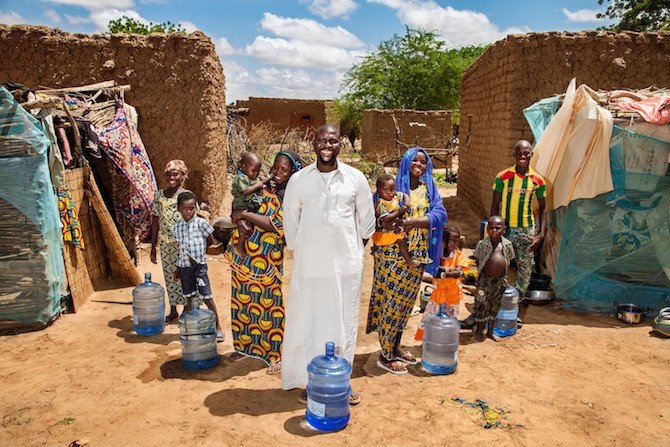
(Centre) Hamidou Hama’s family, in the Niger, has three options for obtaining the 100 litres they use daily: getting water for free from unsanitary ponds created by rainfall or paying for water either from a nearby tap, only open for limited periods during the year, or from a distant borehole.

The Abu Noqta family, Syrians living in Jordan’s Za’atari refugee camp, need 380 litres of water daily, including to stay cool amid brutal temperatures.
“We’re very economical with our water because we don’t have enough,” said Ms. Abu Noqta.
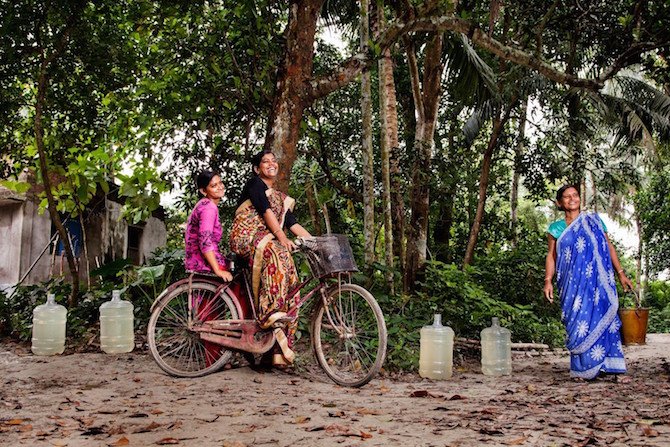
(Centre) health worker Somashree Saha, her sister and mother draw the 80 litres of water they require for household use from a hand pump, in India. Because of its high iron content, the water turns a murky colour when exposed to oxygen, emits a pungent stench and can cause digestive problems.
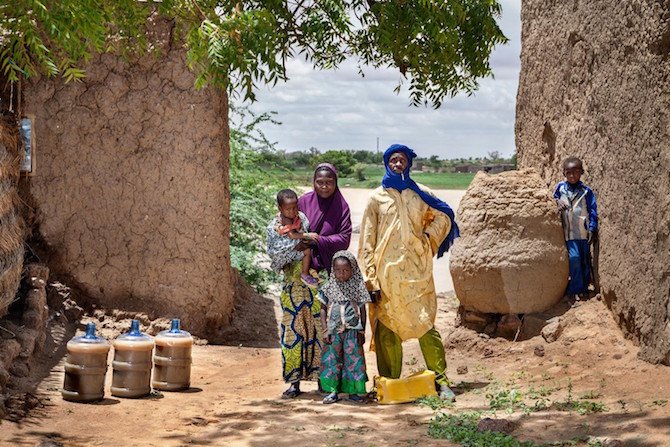
Each day, Mahamadou Moussa and his family require 60 litres of water, which they filter through a traditional process, for drinking and cooking. They rely on the nearby Niger River for bathing, but they also know that the river water carries diseases, including diarrhoea and cholera.
Without water, the survival, growth and development of children are at risk. Water and sanitation related diseases disproportionately affect children, and remain among the major causes of death in children under five. Over 800 children under five die every day from diarrheal diseases linked to inadequate water, sanitation and hygiene.
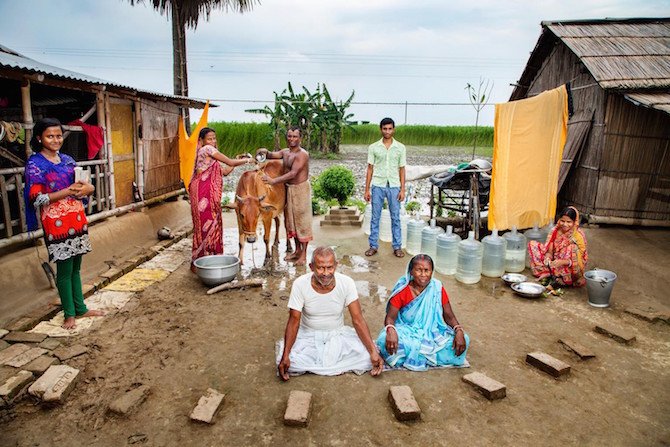
(Background, second from left) Swarga Mala Gayali lives with her husband and his family. They use 220 litres of water daily, in India. Before a handpump was installed three years ago, Swarga Mala journeyed a couple hundred metres about 40 times a day to collect water from a neighbour’s home.
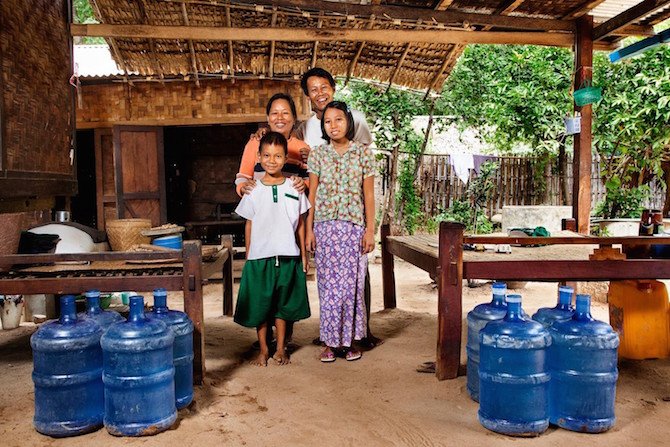
(Background, right) San Win’s family earns money by farming peanuts on their three-acre plot of land, in Myanmar. They use 160 litres of water daily, which they collect from a 15-year-old tube well at the local school, where queues often grow long.
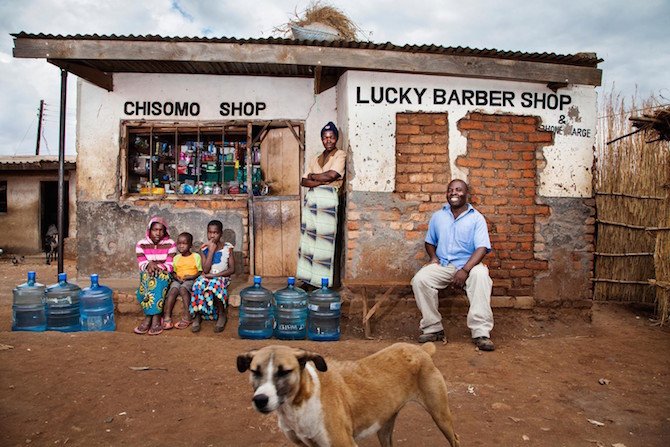
The Malenga family, in Malawi, uses 120 litres of water each day.
“We used to draw water from a shallow well. It wasn’t clean like the borehole we draw from now. We got diarrhoea, and some members of the community got cholera,” said Mr. Malenga, who owns a small grocery shop.
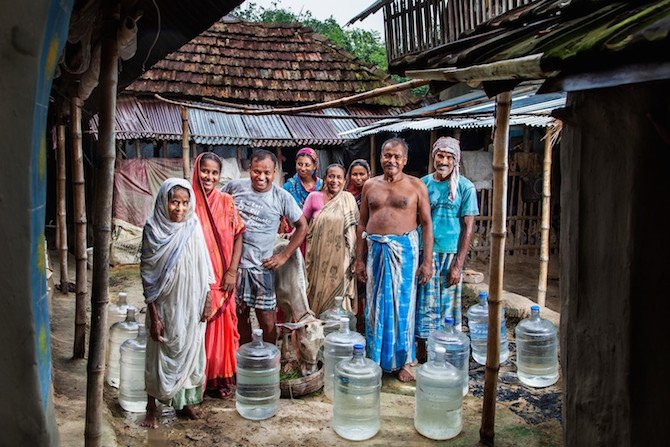
(Left) matriarch Atiphon Sarker, her four sons and their families share a compound in India. They use 220 litres of water daily, drawn from a shallow well, and a tube well 200 meters from their home. The tube well’s water tastes better, but it is shared by 100 families and breaks once or twice a month.
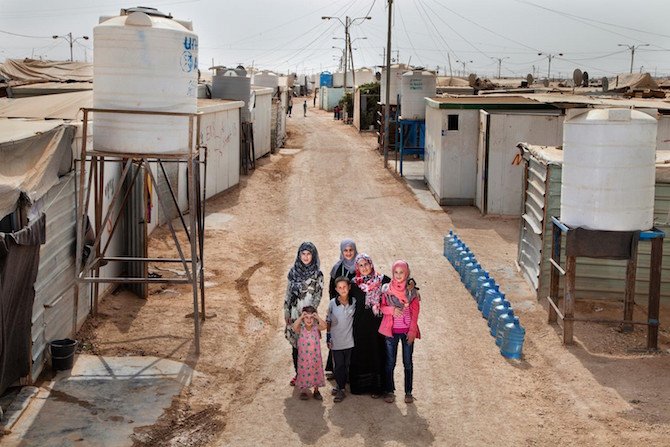
“[W]hen we didn’t clean so much due to not having enough water, we were getting scabies and lice,” said Amal Al Hoshan (second from right), in Za’atari.
She and her children use 300 litres of water daily.
“The area we live can’t be considered a village. A village would be much cleaner,” she added.

Seamstress Nyo Oo, her husband, Kyaw Soe, a store owner, and their daughters use 100 litres of water daily, mostly drawn from a local borehole, in Myanmar. To save money, during the rainy season, they also obtain water for bathing from a local well or ponds, despite the risk of contamination.
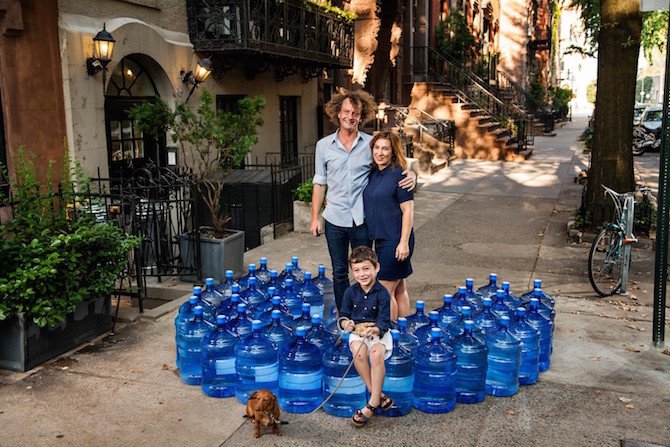
(Left) photographer Ashley Gilbertson says he knew his own family’s water use—1,000 litres daily—in the United States of America would be more than in some countries where he travelled, but he didn’t realize by how much
“I’m shocked by the amount of water my family uses in New York,” he said.
Inadequate water and sanitation has been linked to stunting, which affected 159 million children under 5 in 2014. Stunting causes irreversible physical and cognitive damage, which inevitably impacts on their performance at school and future earnings. These deprivations compound to create a cycle of inequality that effects generations as well as the societies and economies in which they live. It is time to break this cycle for all children, everywhere.
Last year, UNICEF’s efforts provided nearly 14 million people with improved drinking water sources and more than 11 million with improved sanitation. In times of crisis, UNICEF’s emergency responses benefited 18 million people with drinking water and over 4 million with sanitation efforts – that’s equal to reaching more than the populations of London, New York City and Paris. This shows that change is possible, and that universal access is within reach.
We must act now to reach children who have been left behind. But also, we must prepare for new challenges and threats on the horizon that can reverse much of the progress already made. Climate change and resulting weather extremes are likely to affect over 175 million children each year for the next decade. In order to build a more resilient future, we must focus on improving WASH infrastructure where needed so they can withstand natural disasters, on promoting changes in behaviour to water conservation, and on creating environmentally enabling environments.
Providing equitable access to clean water is crucial to ensuring the survival and development of children, and giving every child a fair chance at life.
You can go to TAKE ACTION NOW and Tweet now and #FightUnfair for the world's children who deserve better.